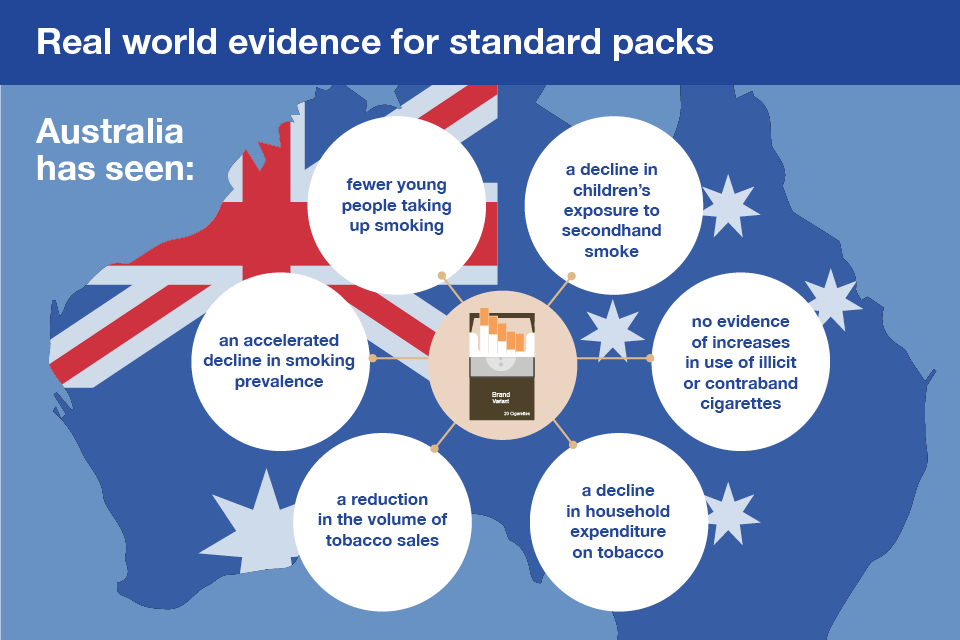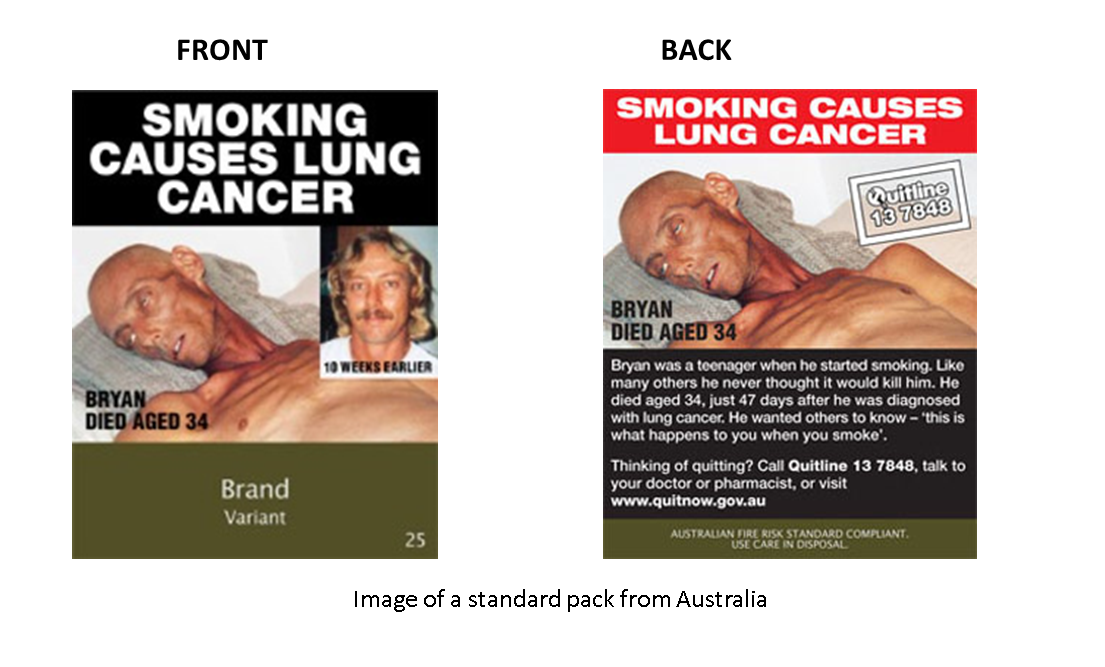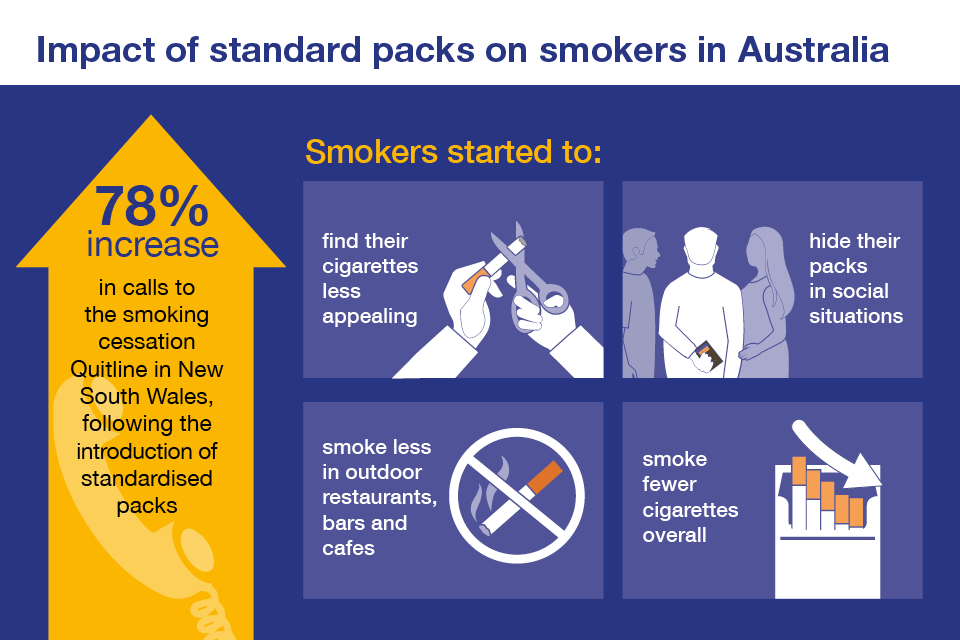The latest edition of Health Matters is about standard packs and seizing the moment to help more smokers quit. I'd like to thank Dr Colin Mendelsohn, tobacco treatment specialist and Associate Professor in the School of Public Health and Community Medicine at the University of New South Wales, Australia, for the following blog:

The UK is the second nation in the world, after Australia, to introduce tobacco standard packs.
These drab and unattractive packs are hitting the shelves now and by May 2017 all cigarettes and rolling tobacco sold in the UK will appear in standard packs.
They can have a big impact on preventing the next generation of smokers and reducing quit rates, as set out in the latest edition of Health Matters.
Australia introduced mandatory standardised packaging with enhanced health warnings and images on 1 December 2012. For clinicians such as me, this was followed by some interesting observations and opportunities.
We were all puzzled in the early weeks when smokers complained bitterly that their favourite cigarette brands tasted worse, appeared to be of lower quality and were less satisfying.
Many were convinced that the tobacco companies had taken the opportunity to change the formula and some were angry.
Tobacco companies repeatedly denied that there had been any change in their products, but smokers were still not convinced.
Psychologists explained this as a sign of the power of marketing. Packaging creates certain taste expectations.
Once all the familiar colours and branding were removed from the packaging, the subjective sensation of taste changed.
This changed taste experience was only temporary and resolved within a month or two as the neuro-circuits adjusted.
Previous research had shown this with children. Researchers at Yale University found that children presented with three types of foods (carrots, fruit snacks and crackers) significantly preferred the taste of foods with popular cartoon characters on the packaging, even though they contained the exact same items.
Another frequent comment by smokers was that certain graphic images were far more distressing than others.
The most disturbing pack featured Bryan Curtis, a 34-year father of two, who had smoked 2 packs of Marlboro Reds a day for nearly 20 years. The haunting image shows Bryan on his deathbed, emaciated and close to death from lung cancer.
This is in stark contrast to the adjacent photo of Bryan 10 weeks earlier, looking young, healthy and bright eyed. Many smokers reported asking retailers not to give them ‘the lung cancer pack’. Other individuals were more distressed by different images which were more relevant to them.
Many smokers reported asking retailers not to give them ‘the lung cancer pack’. Other individuals were more distressed by different images which were more relevant to them.
This often led to morbid jokes, such as ‘At least smokers still have a choice. They can have heart disease or lung cancer’, depending on which pack they pick.
However, these comments also raise opportunities for clinicians. Concerns about health effects can be explored and may lead to a useful discussion.
Increasingly smokers report buying cheap cigarette brands, partly in response to rising tobacco taxes, but also due to the loss of being able to identify with an upmarket brand.
Stop smoking specialists should expect to see an increase in requests for help. The research over time in Australia showed a significant increase in quit attempts after standard packaging was introduced.
Quitline calls peaked 4 weeks after introduction, and the largest fall in smoking rates on record occurred 6-12 months later.

Interestingly, several of us did an informal survey of smokers before the new packs appeared asking how much the changed packaging would affect their smoking behaviour.
Most said 'not at all' as most smokers are driven by addiction. However, the change clearly had an effect on many.
The introduction of standard packaging is an opportunity to again raise the issue of smoking.
It is worth asking smokers what they think of the new packaging, which may open the door to a discussion about smoking and possible cessation.
The new packs may be the last straw for some smokers and will trigger some quit attempts.
Smoking is no longer ‘cool’ in Australia and standardised packaging has probably contributed to this.
Research shows that smokers are less likely to display their packs in public, such as when seated outside. Smokers increasingly conceal their smoking status to family and friends and probably to health professionals as well.
We need to be aware of this - if the patient conceals their smoking status we can’t help them.
So it’s clear from the experience in Australia that local healthcare systems in England need to be ready to make the most of the roll out of standard packs to boost quitting rates in their populations.
Download the Health Matters infographics, slides and video content and use them locally when helping to make the case for stop smoking services.
Health Matters
Health Matters is a resource for professionals which brings together the latest data and evidence, makes the case for effective public health interventions and highlights tools and resources that can facilitate local or national action. Visit the Health Matters area of GOV.UK or sign up to receive the latest updates through our e-bulletin. If you found this blog helpful, please view other Health Matters blogs.
